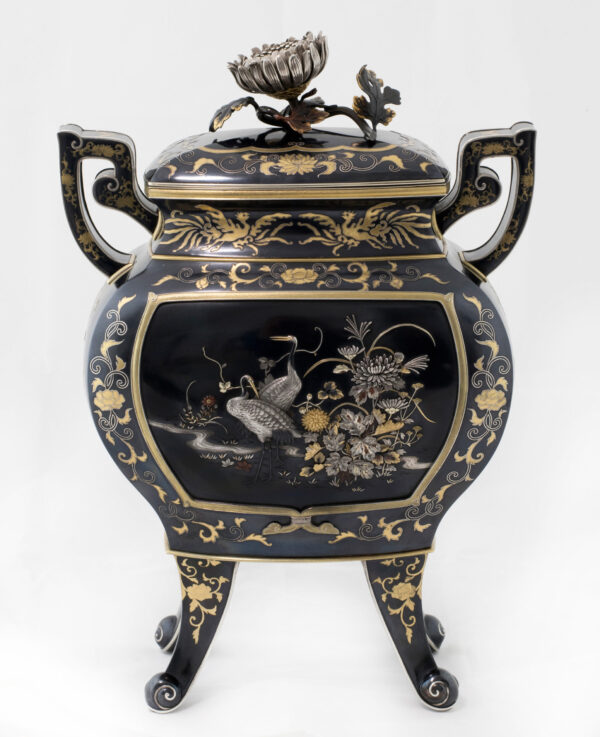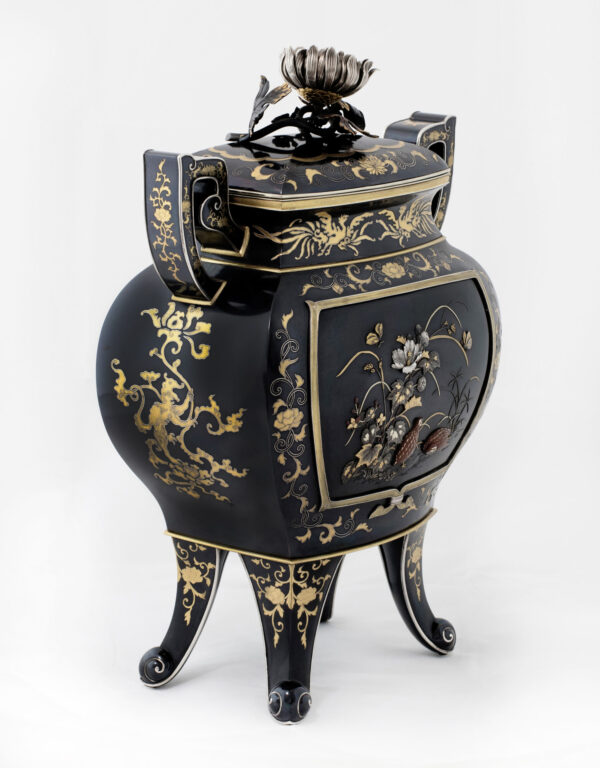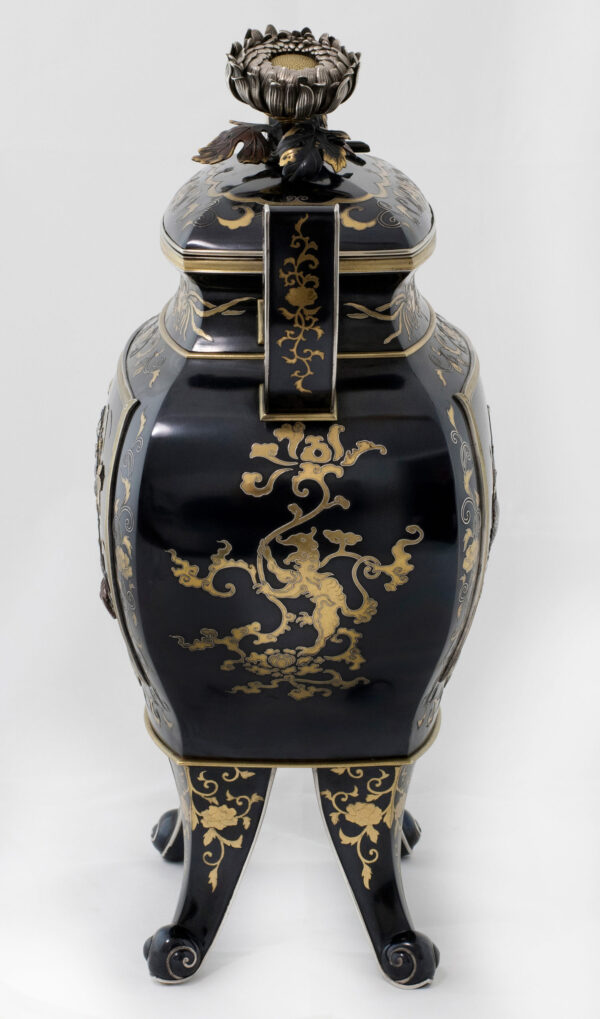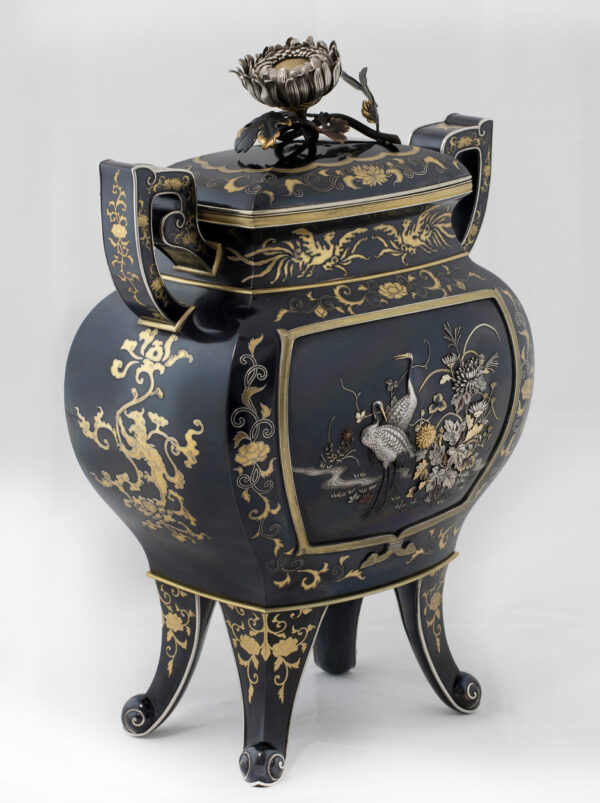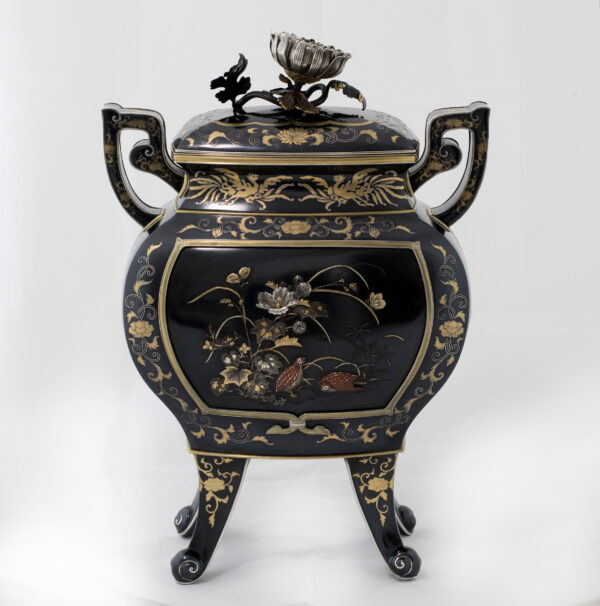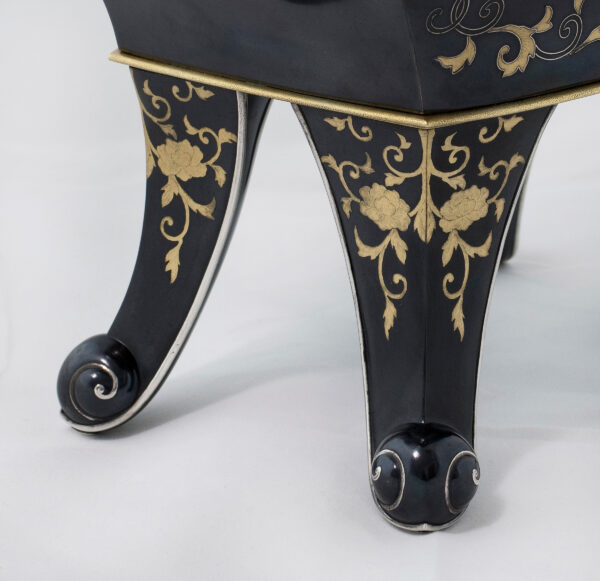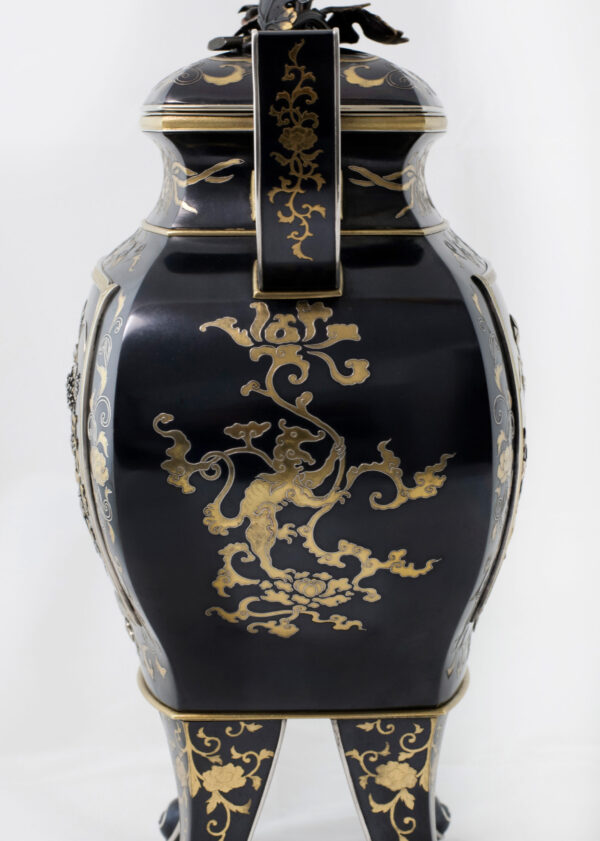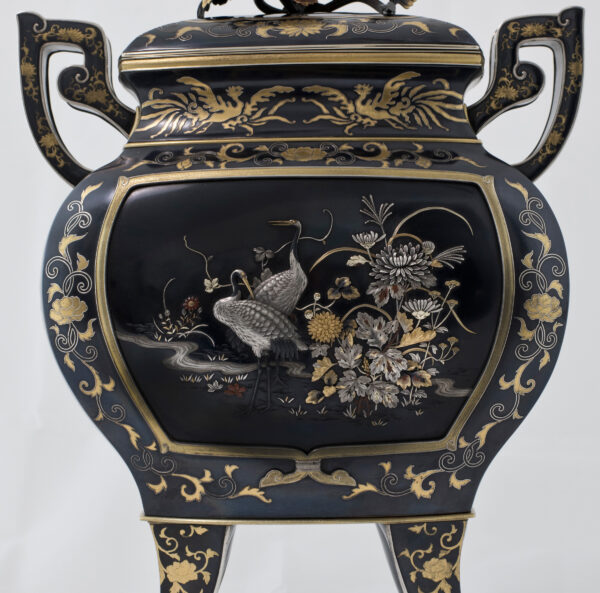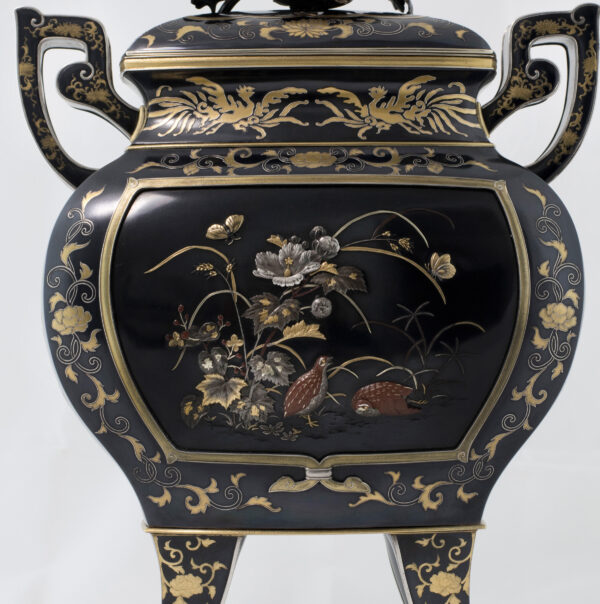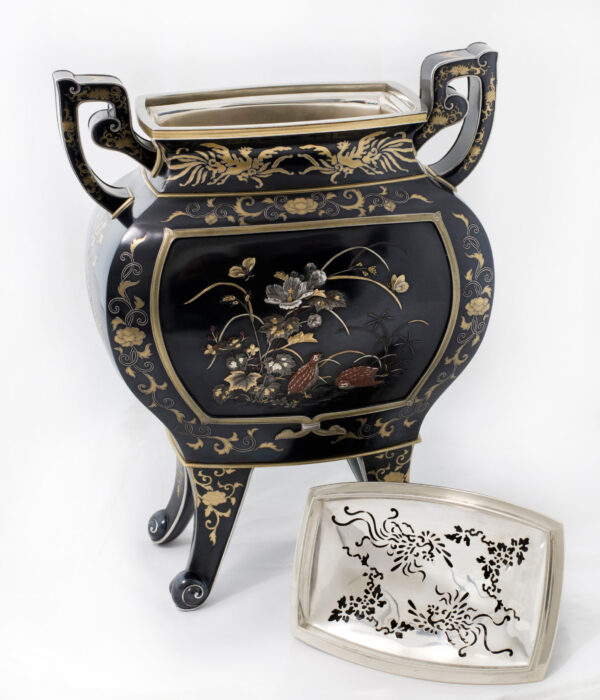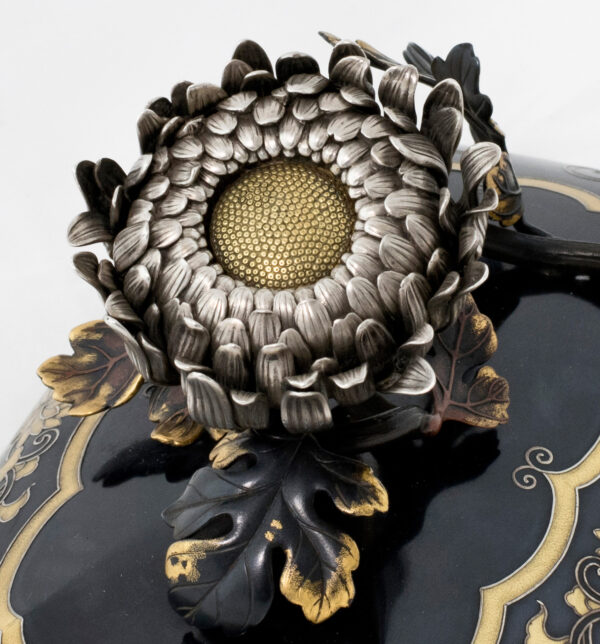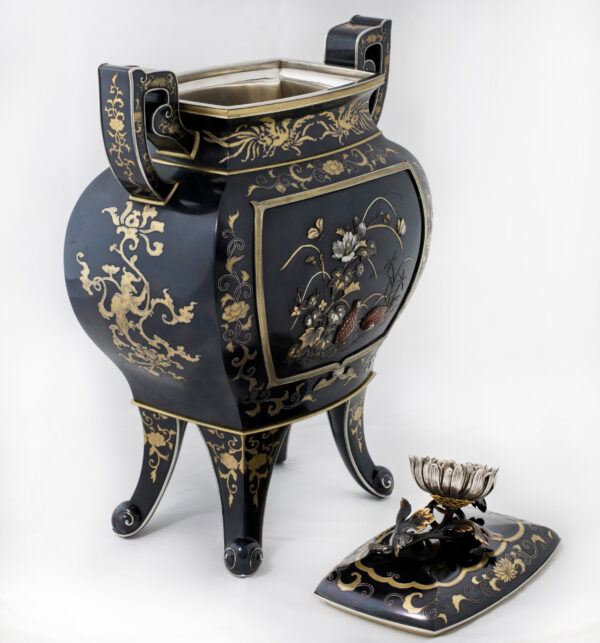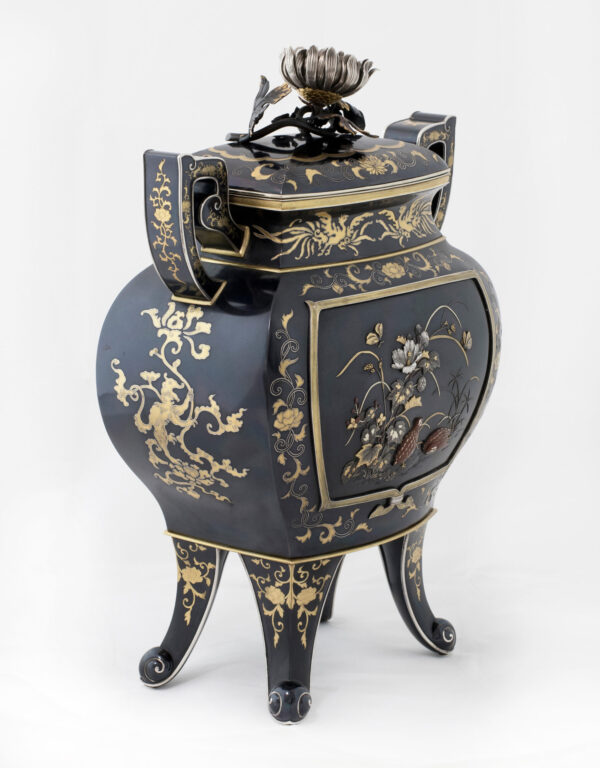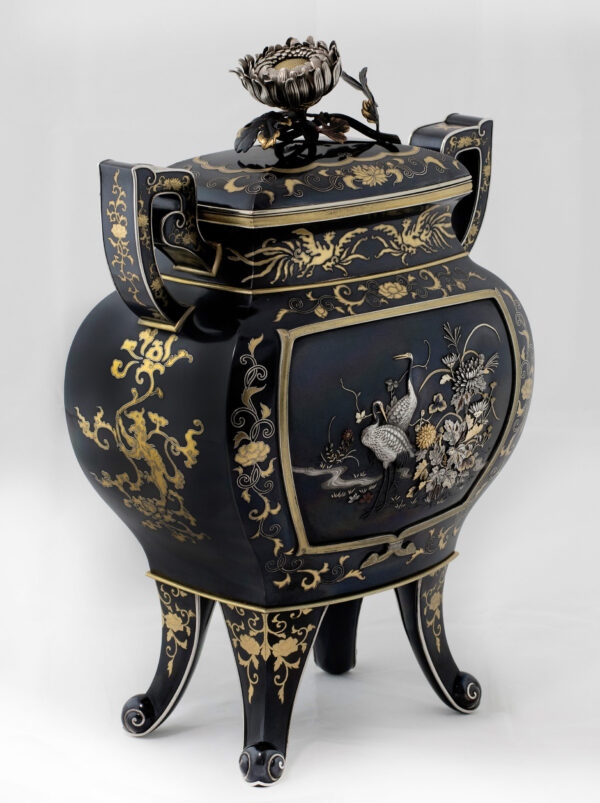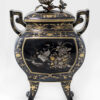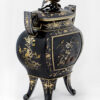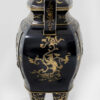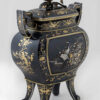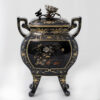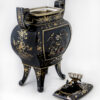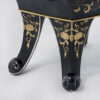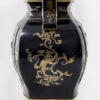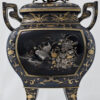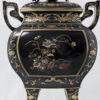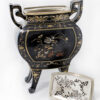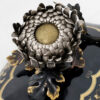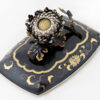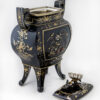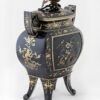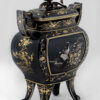As part of our Japanese works of art collection we are delighted to offer this large scale Meiji period 1868-1912, shakudo and mixed metal koro ( incense burner) this large and exceptionally rare koro is predominately formed from hand beaten sheets of shakudo, a highly revered alloy containing a percentage of gold that had been perfected in the 16th century by Japanese sword fitting makers.The unknown artist has decorated this opulent vessel with two opposing panels of Manchurian cranes stood aside a flowing river amidst native foliage, as well as a pair of quail foraging within a floral landscape beneath butterflies in flight, each panel housed within gold and silver borders giving the appearance of tied ribbons . The koro stands upon four silver mounted shakudo legs that are decorated in gold floral swags, this floral theme continues around the central panels, to the handles and lid of the vessel, each scene painstakingly framed in gold or silver wired nunomezogan technique, some stippled to give a nanako ground or hand planished effect, the neck is further decorated to each side with an opposing pair of Phoenix (ho ho birds) in flight, a not insignificant gold and silver Imperial Chrysanthemum adorns the lid which fits snugly upon a silver lined interior, and is once again pierced to the underside with a pair of Phoenix in flight , the piercing to allow the escape of incense. The sides of the vessel are quite remarkable in that they are decorated with what can loosely be described as a pair of mythical Kirin clambering upon stylized trailing foliage , a most unusual subject matter, the nunomezogan work is once again sensational in every respect as is each and every aspect of this outstanding piece of Meiji period metalwork.
Literature :
A vessel such as this formed from solid hand beaten shakudo is quite unique in terms of its proportions and subject matter, there appears no record of a shakudo vessel of this scale in any of the better known collections, auction records or readily available research books, undoubtedly it was a special commission or destined for one of the international expositions, and in my view there were only a handful of artists capable of producing such a vessel at the time this was manufactured.
One of the better know artists producing larger scale high quality items using Nunomezogan techniques were Kajima Ikkoku I & II , their pieces were incredibly lavish though were usually decorated upon iron, as were the works of the Tekkodo company and of course the well known Komai company of Kyoto.
The other artist that comes to mind is Kashima Ippu 1828-1900, he is recorded as being the Zogan worker on a collaborative koro that sold at Christies in May 2012, the main subject matter of cranes aside a flowing river is the same, although not uncommon, however the scrolling vine work to the body and handles are remarkably similar to the decoration on our koro, as is the mythical Kirin type creature within the scrolling vines in the lower front panel. From this example and dateline I think we may make a tentative attribution. For the sheer brilliance of the metalwork skills we could similarly plump for Yamada Motonobu, Ishi Masao or Unno moristoshi, although these artists were not recognized in the very specialist nunomezogan techniques that this magnificent koro displays.
In summary unless the Koro surfaces in a historic exhibition catalogue we may never know for sure which metalwork master or masters produced it, this will not alter its scarcity and we are delighted to bring it to the market as a major part of this years exhibition.
Condition report :
Exceptional age related condition.
Approximate Sizes :
Height : 14 5/8″ 37.3 cm
Width : 10 1/4″ 26 cm
Depth : 5 1/2″ 14 cm
Free worldwide delivery and a certificate of authenticity are included within the price of this item.
